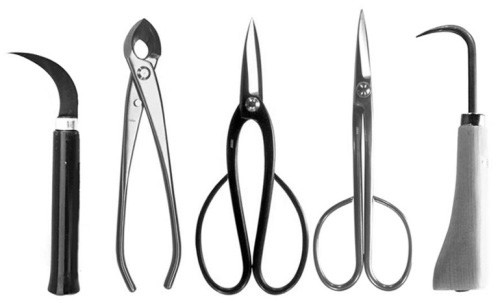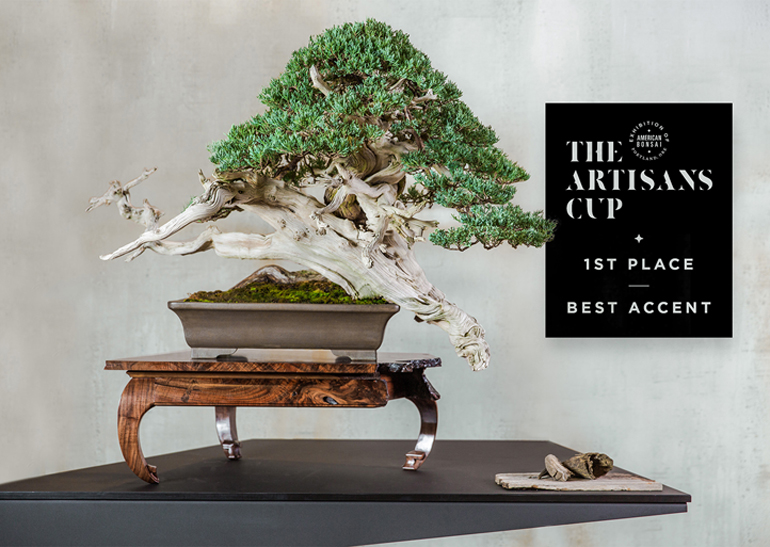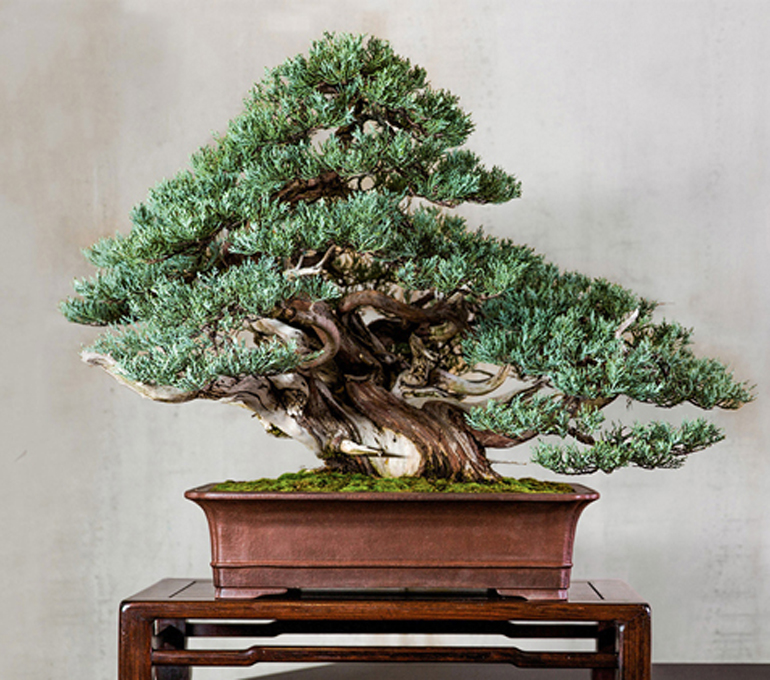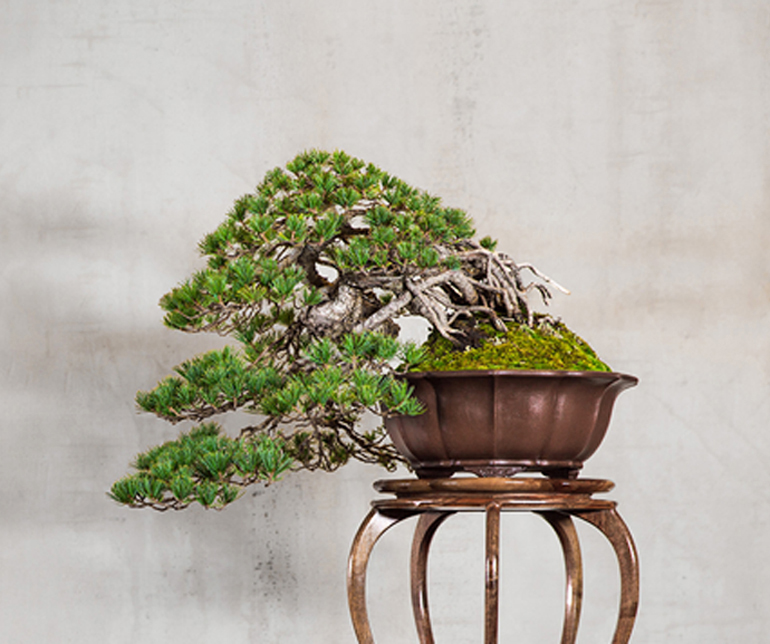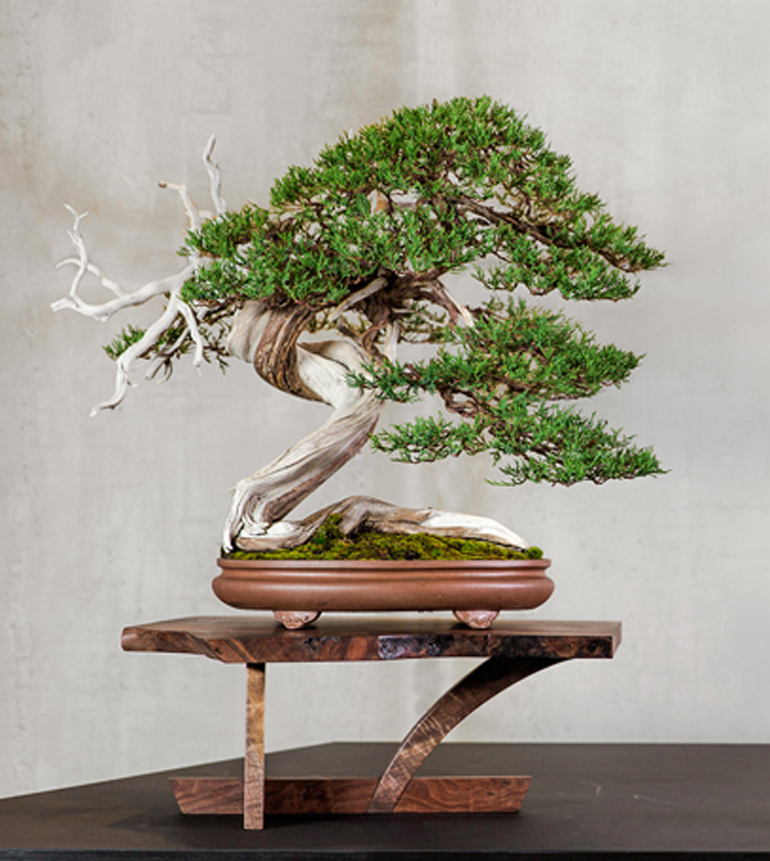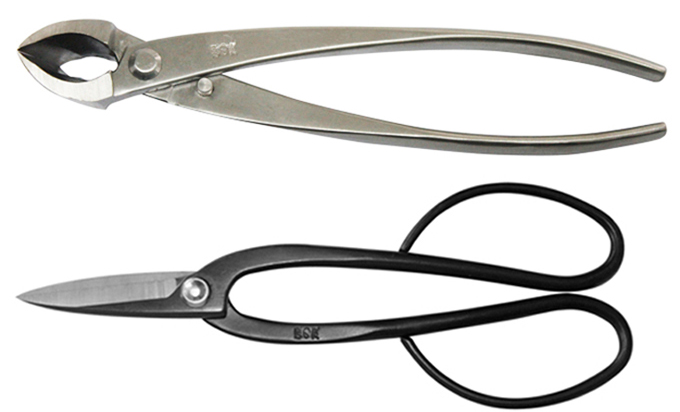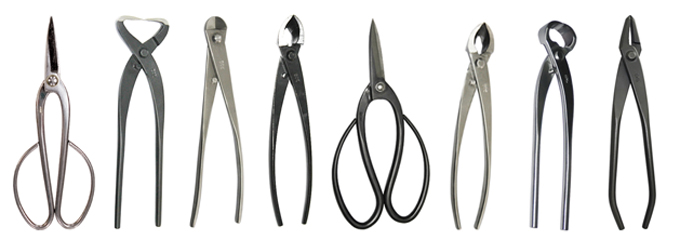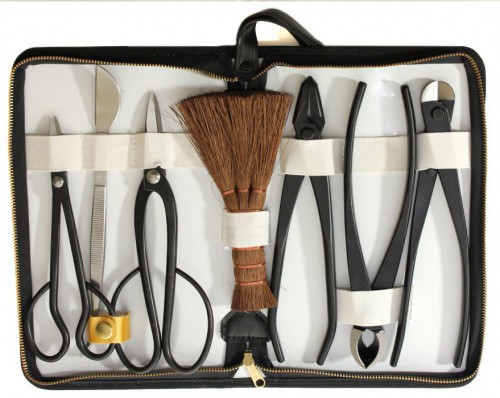 This has got to be one of the most magnificent Chinese hackberry (Celtis sinensis) bonsai anywhere. Though the distinctive split trunk needs no comment, you might also notice the highly developed ramification (fine branching). The tree was donated to the Pacific Rim Bonsai Collection (now the Pacific Bonsai Museum) by Ben Oki.
This has got to be one of the most magnificent Chinese hackberry (Celtis sinensis) bonsai anywhere. Though the distinctive split trunk needs no comment, you might also notice the highly developed ramification (fine branching). The tree was donated to the Pacific Rim Bonsai Collection (now the Pacific Bonsai Museum) by Ben Oki.
I know we just posted this last August, but I’m enjoying the tail end of a short vacation so rather than go to the trouble to work up a new post, it seems like a good time to remind you about Dave DeGroot’s Principles of Bonsai Design. BTW, it was Dave who originally sent us the four bonsai photos you see here (from the Pacific Bonsai Museum), along with his observations.
The title of this post is taken from the following quote by Rick Marsh:
“Got my copy of DeGroot’s new book this weekend … I have been devouring it for two days now and must say this is the most complete and understandable Design book on Bonsai ever! I had his first book and this is just a HUGE expansion on that. You will be wasting years before you gain the knowledge in this work. Of course this is all in my most humble opinion ;)”

Principles of Bonsai Design. Here’s a spread out of Dave’s chapter on branch structure. “This book is an absolute must for any serious bonsai grower. I heartily recommend it.” Jerry Meislik, author of Ficus, the Exotic Bonsai.
 This Formosan juniper (Juniperus formosana) by Mr. Kuo An Lee is from Taiwan. Amy Liang Chang donated it to the Pacific Bonsai Museum.
Dave DeGroot wrote: "This Chinese juniper was nursery grown and trained in Taipei, Taiwan. The basic shape was created by bending the juvenile tree around a bamboo stake. Field growing enlarged the trunk, which was then topped to obtain the correct height. The illusion of great age was supported by stripping the bark from certain branches and parts of the trunk. Carved grooves and channels in the stripped trunk suggest a long period of weathering and decay, further enhancing the illusion of age and powerful natural forces.
The artist has created a feeling of gracefulness with the gently curving, slanted trunk, while the dropped branch on the right adds tension and interest by making the tree just slightly unbalanced."
This Formosan juniper (Juniperus formosana) by Mr. Kuo An Lee is from Taiwan. Amy Liang Chang donated it to the Pacific Bonsai Museum.
Dave DeGroot wrote: "This Chinese juniper was nursery grown and trained in Taipei, Taiwan. The basic shape was created by bending the juvenile tree around a bamboo stake. Field growing enlarged the trunk, which was then topped to obtain the correct height. The illusion of great age was supported by stripping the bark from certain branches and parts of the trunk. Carved grooves and channels in the stripped trunk suggest a long period of weathering and decay, further enhancing the illusion of age and powerful natural forces.
The artist has created a feeling of gracefulness with the gently curving, slanted trunk, while the dropped branch on the right adds tension and interest by making the tree just slightly unbalanced."
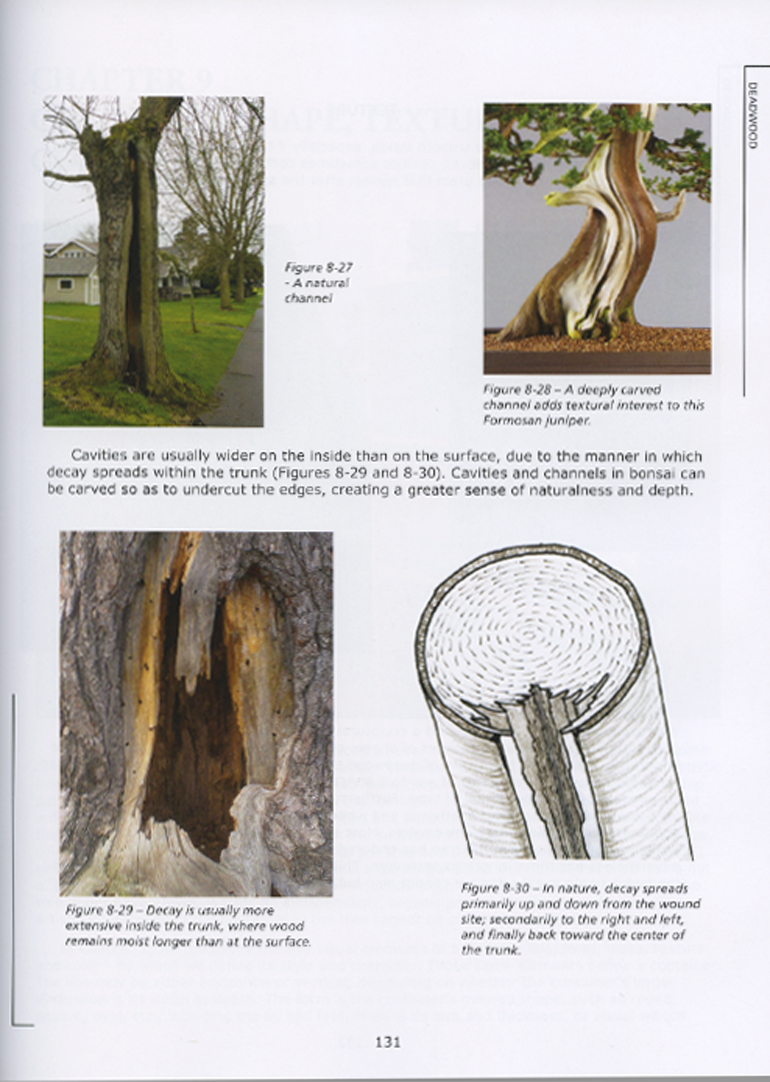 You might notice this page from Dave's Principles of Bonsai Design includes the trunk of the tree just above.
You might notice this page from Dave's Principles of Bonsai Design includes the trunk of the tree just above.
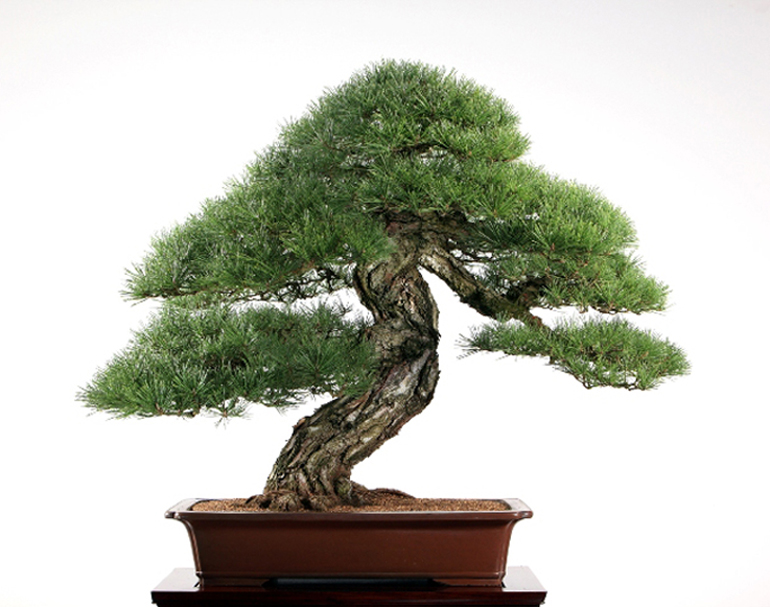 Amy Liang Chang (you might know her as just Amy Liang) of Taiwan is the artist and donor of this gnarly old (over 400 years!) Japanese black pine (Pinus thunbergii).
Dave wrote this about this magnificent old tree: "The black pine is a coastal tree of southern Japan, strong, vigorous, long lived and possessed of many attractive qualities. For all the above reasons, it is known as “The King of Bonsai."
This tree was quite tall when it was collected. In order to create a bonsai of pleasing proportions, the entire upper trunk was cut off, leaving only the lower trunk and the first four branches. Taipei bonsai artist Amy Liang Chang purchased the tree from a Japanese nurseryman in 1971 and styled into in its present form. The tree was totally cleansed of soil to permit its importation to the U.S. in 1989. Although badly stressed by that experience, it lived up to its reputation as a strong, vigorous tree and recovered fully."
Amy Liang Chang (you might know her as just Amy Liang) of Taiwan is the artist and donor of this gnarly old (over 400 years!) Japanese black pine (Pinus thunbergii).
Dave wrote this about this magnificent old tree: "The black pine is a coastal tree of southern Japan, strong, vigorous, long lived and possessed of many attractive qualities. For all the above reasons, it is known as “The King of Bonsai."
This tree was quite tall when it was collected. In order to create a bonsai of pleasing proportions, the entire upper trunk was cut off, leaving only the lower trunk and the first four branches. Taipei bonsai artist Amy Liang Chang purchased the tree from a Japanese nurseryman in 1971 and styled into in its present form. The tree was totally cleansed of soil to permit its importation to the U.S. in 1989. Although badly stressed by that experience, it lived up to its reputation as a strong, vigorous tree and recovered fully."
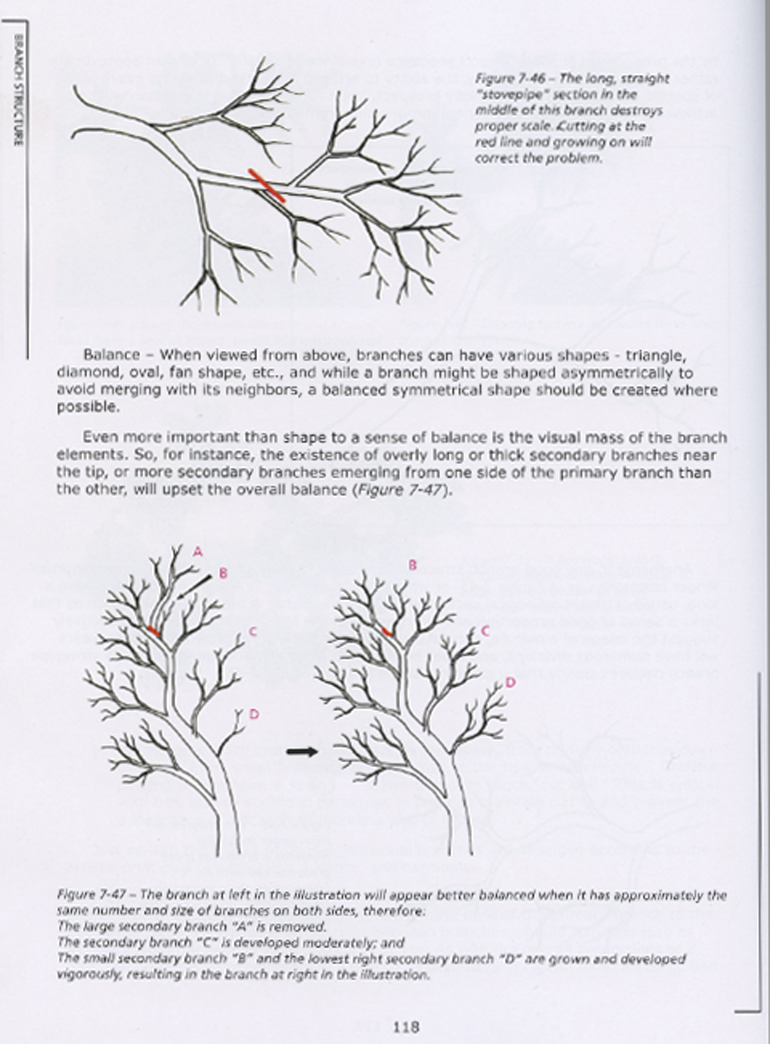
One more page from Principles of Bonsai Design. Just to whet your appetite.
 The artist and donor was of this brilliant Japanese maple was George Gray of Dallas, Texas. It's date of origin is 1963 and it has been a bonsai since 1968.
Here's what Dave DeGroot wrote about this colorful tree: "Certainly, the Japanese maple is one of the most beautiful trees in any landscape, and one of the most beautiful for bonsai as well. Artist George Gray developed this maple from a cutting over a period of more than 30 years. Such a long time in a shallow pot has given the tree excellent surface roots and delicate, well-proportioned branches, so that it projects a sense of both strength and softness. A low, upswept branch on the right side of the tree adds interest by suggesting a secondary trunk.
The shape of the Tokoname-ware container is oval to harmonize with the softly rounded shape of the crown of the tree. The beautiful blue-green color of the container is a perfect foil for orange and red autumn foliage."
The artist and donor was of this brilliant Japanese maple was George Gray of Dallas, Texas. It's date of origin is 1963 and it has been a bonsai since 1968.
Here's what Dave DeGroot wrote about this colorful tree: "Certainly, the Japanese maple is one of the most beautiful trees in any landscape, and one of the most beautiful for bonsai as well. Artist George Gray developed this maple from a cutting over a period of more than 30 years. Such a long time in a shallow pot has given the tree excellent surface roots and delicate, well-proportioned branches, so that it projects a sense of both strength and softness. A low, upswept branch on the right side of the tree adds interest by suggesting a secondary trunk.
The shape of the Tokoname-ware container is oval to harmonize with the softly rounded shape of the crown of the tree. The beautiful blue-green color of the container is a perfect foil for orange and red autumn foliage."
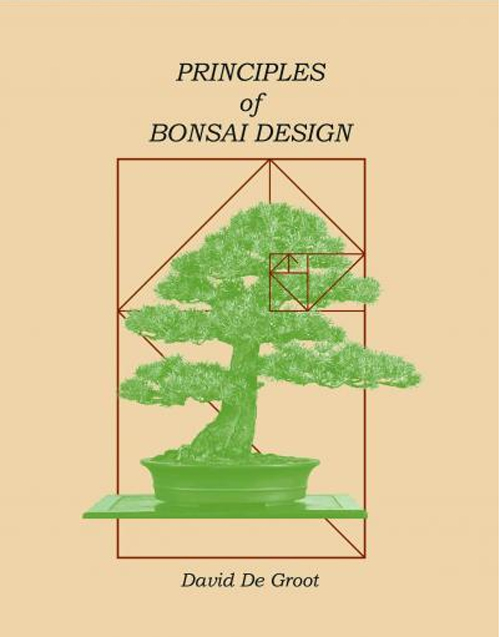
Principles of Bonsai Design. The most thorough and useful Bonsai Design book since John Naka's famous Bonsai Techniques 1 & 2, both of which no doubt greatly influenced Dave (at the risk of bonsai heresy, Dave's book may be as thorough and useful as John Naka's famous books - you can decide for yourself if you can get your hands on Techniques 1 and 2).
Related books that might interest you…
John Naka’s Bonsai Sketchbook
Our Masters’ Series Juniper Bonsai book.
Our Masters’ Series Pine Bonsai book.
Amy Liang’s The Living Art of Bonsai.
Bonsai with Japanese Maples by Peter Adams.
Two Sales End Tonight

25% off Bonsai Aesthetics Tools Sale
ends tonight, Feb 8th, at 11:59pm EST

25% off Bonsai Fertilizer & Tonic Sale
ends tonight, Feb 8th, at 11:59pm EST
plus FREE Shipping on U.S.orders 49.00 or more
remember to select FREE Shipping when you check out
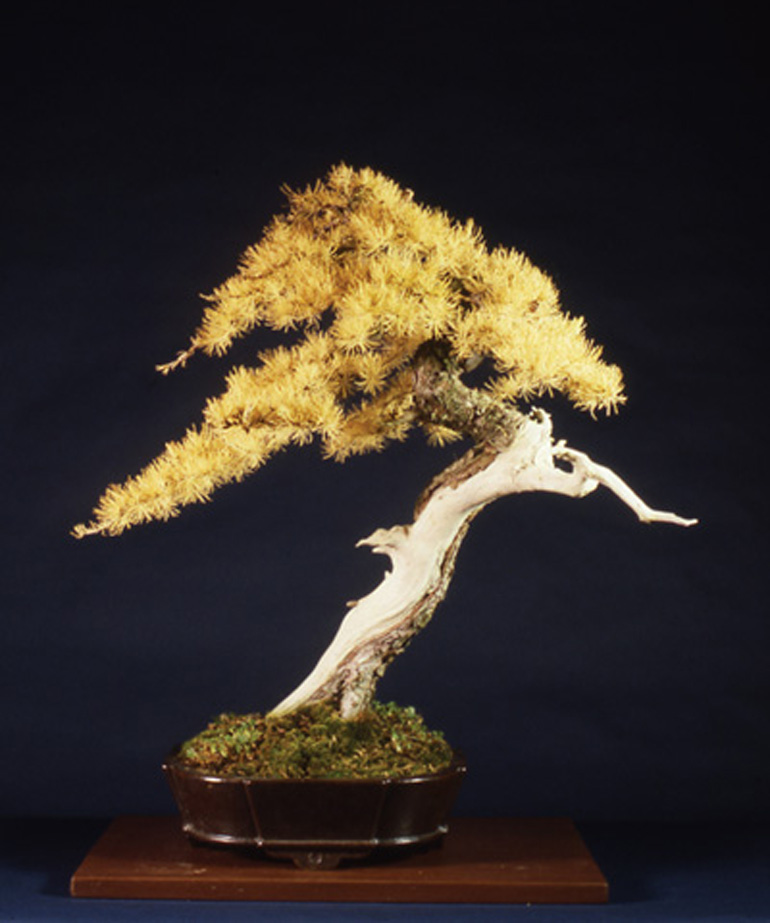
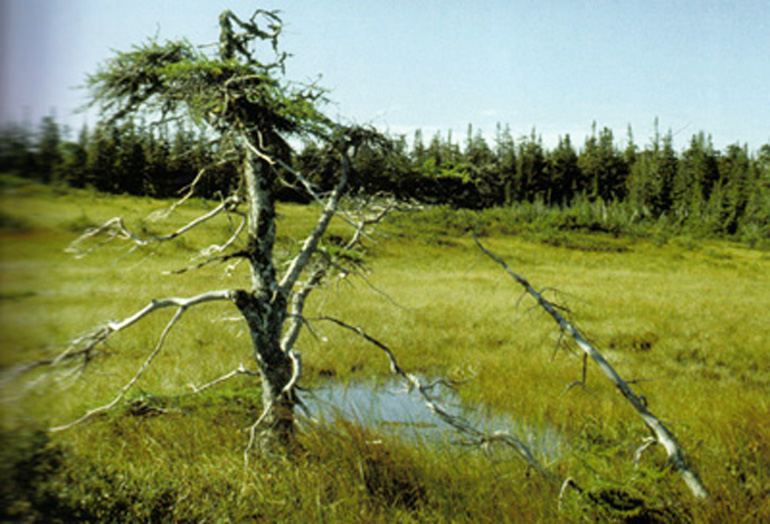
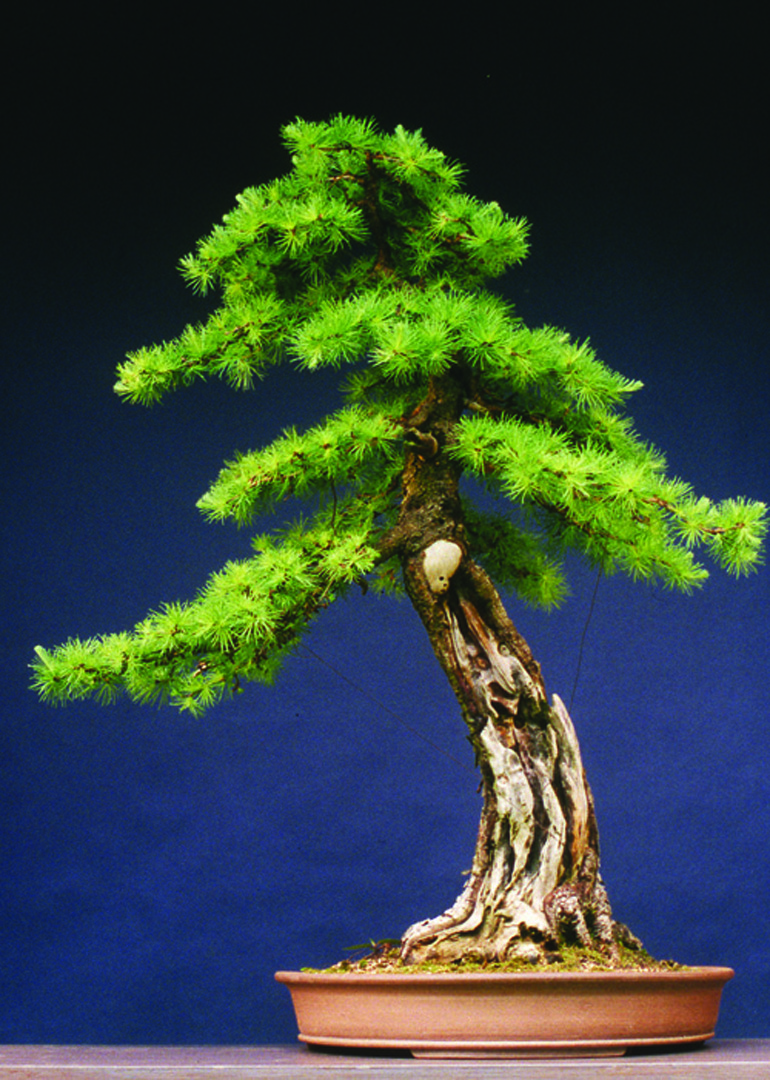
Larch forest with tank. Like the other photos in this post, this one is from Nick's Bonsai from the Wild.
 25% off 500 gram rolls of Bonsai Aesthetics Wire
25% off 500 gram rolls of Bonsai Aesthetics Wire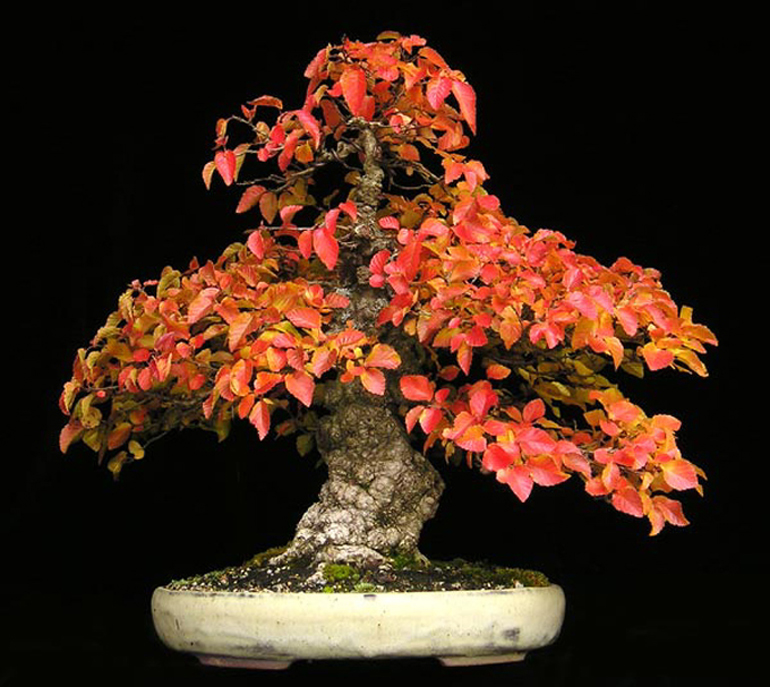 Great tree, great pot. It belongs to
Great tree, great pot. It belongs to 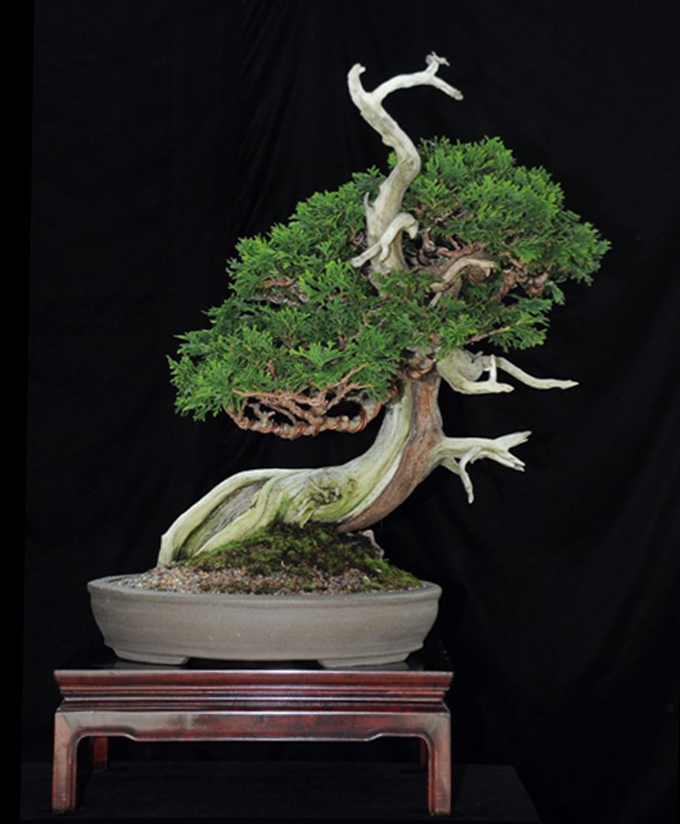
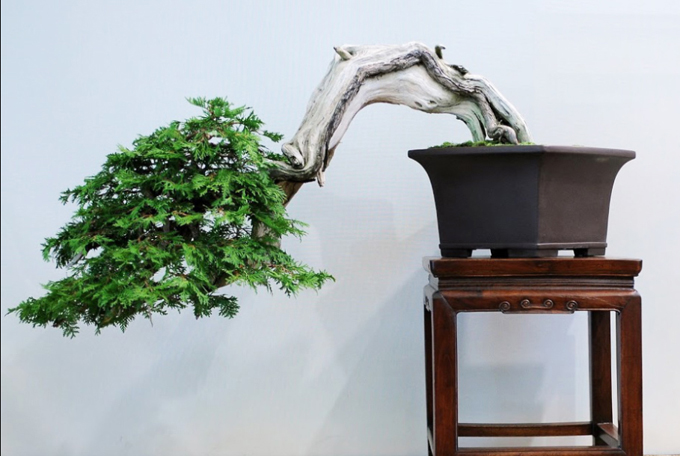





 You might notice this page from Dave's
You might notice this page from Dave's 



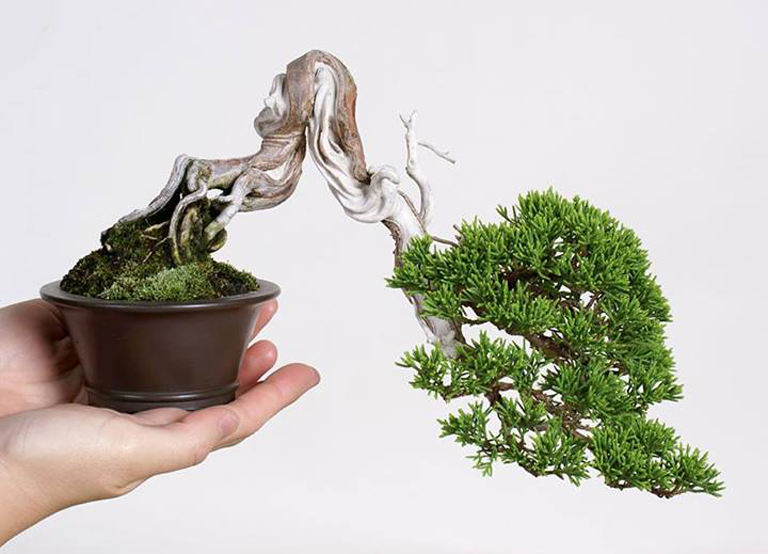


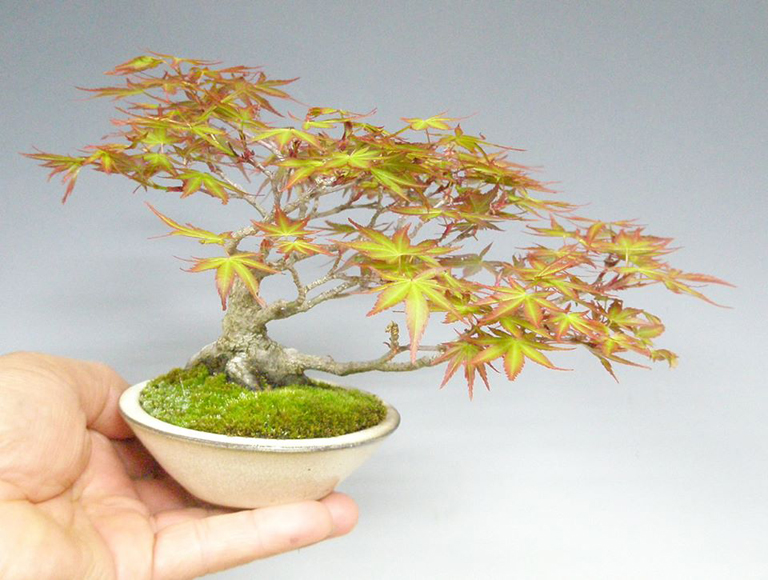

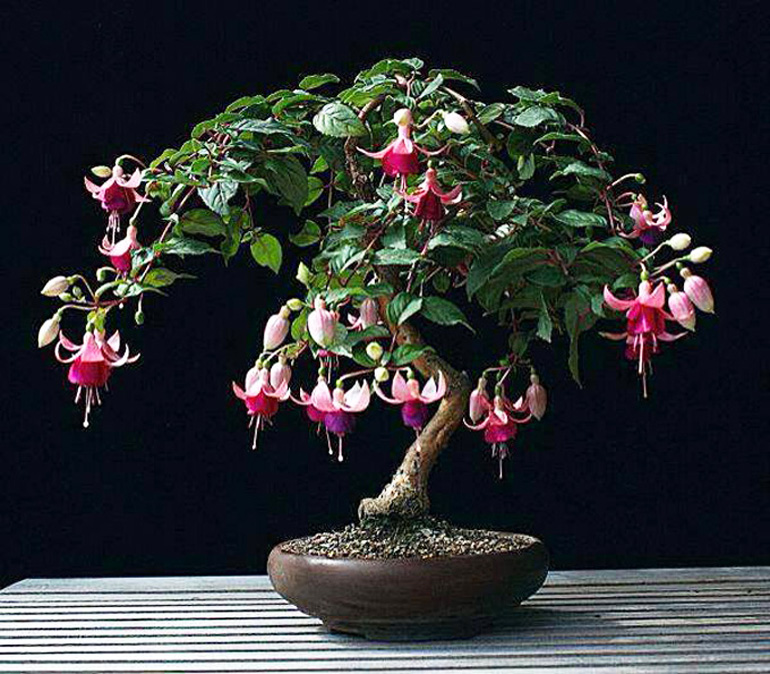 This is the first and only Fuchsia bonsai we've shown. Until now, that is (see below). It's from a post we did two years ago. We originally found it at
This is the first and only Fuchsia bonsai we've shown. Until now, that is (see below). It's from a post we did two years ago. We originally found it at 

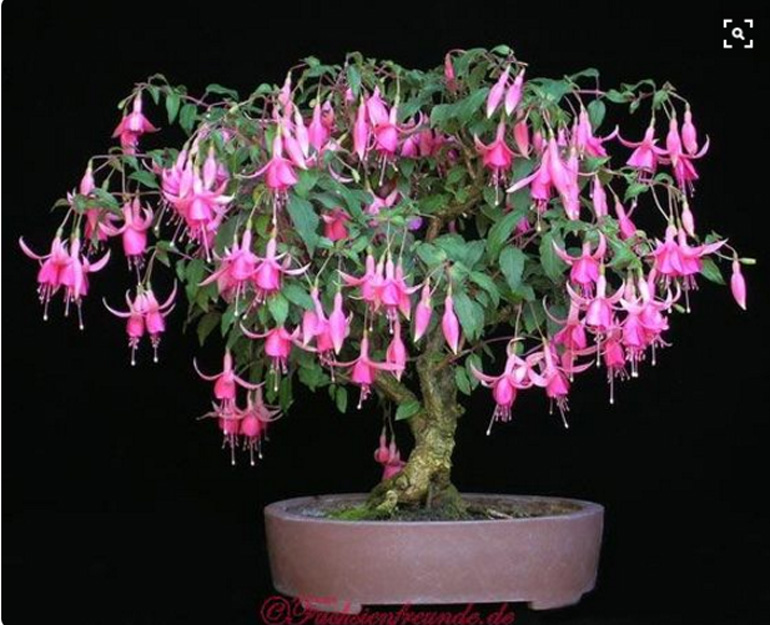




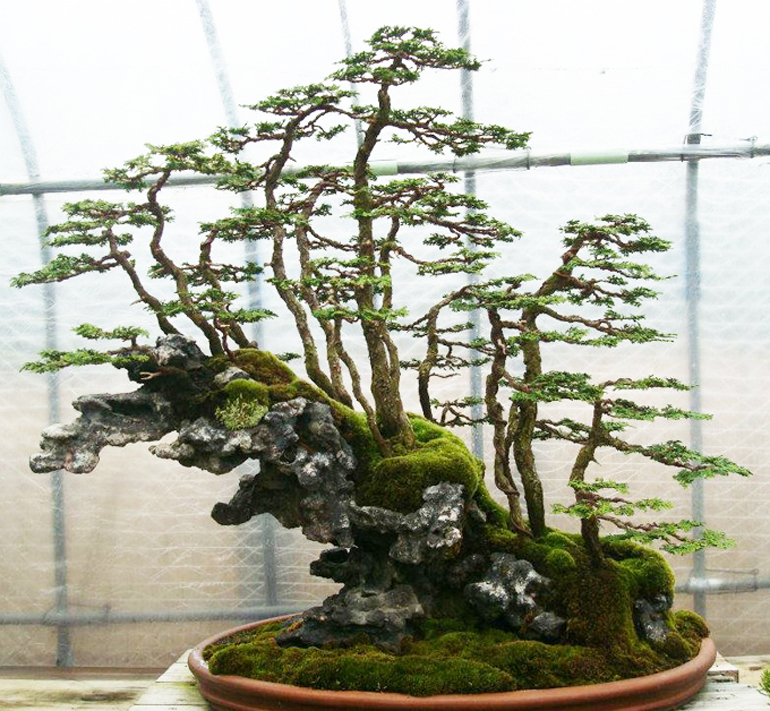 I borrowed this photo from a
I borrowed this photo from a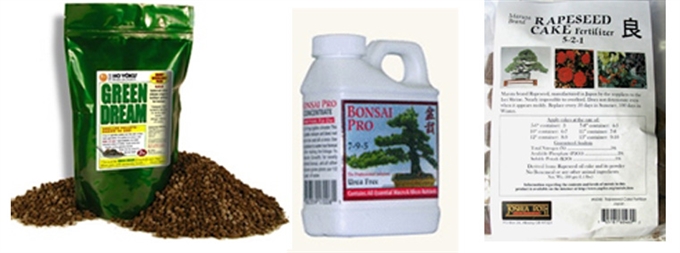
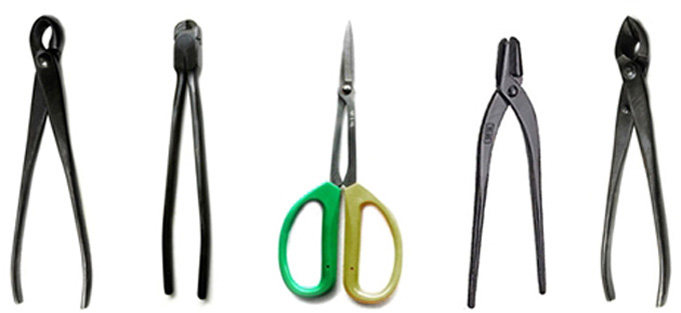


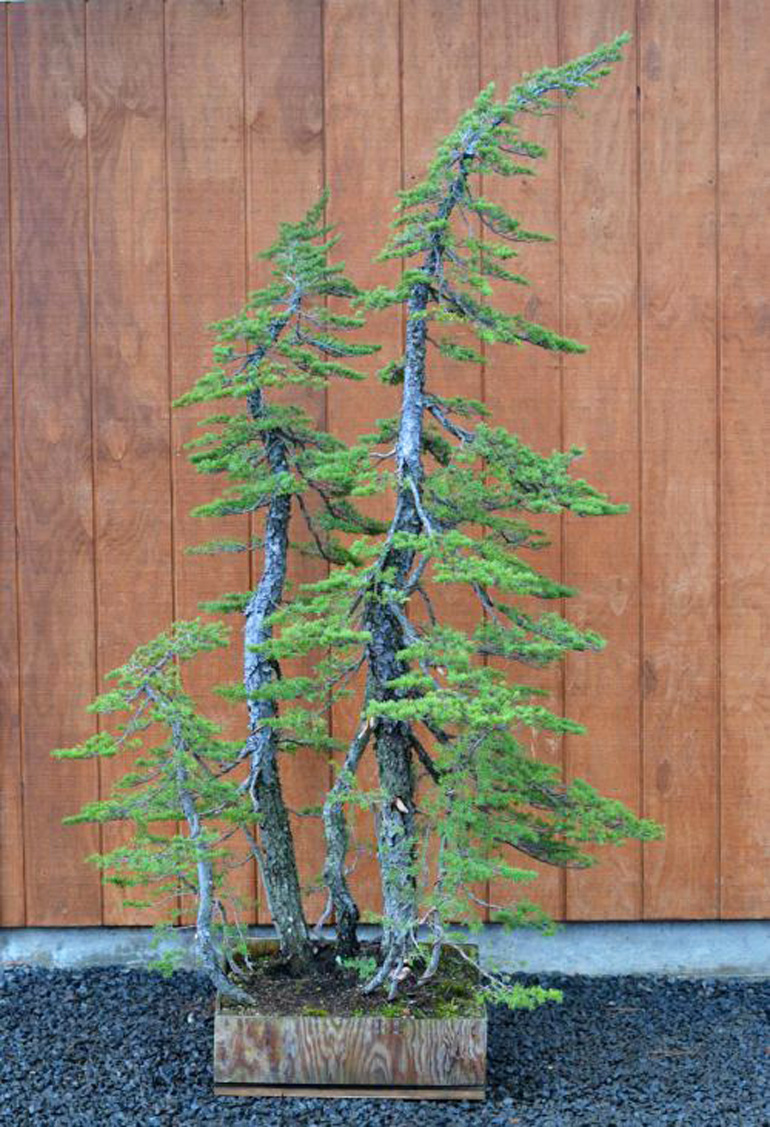 A very tall Hemlock clump (7 feet 4 inches tall - 224 cm). Here's some of that writing I mentioned... "This is all one tree, a natural, root-connected clump. For inspiration on how to handle this styling, I thought of the trees in that curious and expressive mountain zone just below the small and stunted krummholz zone, where the trees still have some height and make up small forest groups. The bottom branches of the trees in this zone often have environmental stability, while the apexes are sometimes windblown. So this tree was suggestively treated that way. This clump continues an exploration of our Northwestern forests in bonsai, the first being another Hemlock group designed some time back."
A very tall Hemlock clump (7 feet 4 inches tall - 224 cm). Here's some of that writing I mentioned... "This is all one tree, a natural, root-connected clump. For inspiration on how to handle this styling, I thought of the trees in that curious and expressive mountain zone just below the small and stunted krummholz zone, where the trees still have some height and make up small forest groups. The bottom branches of the trees in this zone often have environmental stability, while the apexes are sometimes windblown. So this tree was suggestively treated that way. This clump continues an exploration of our Northwestern forests in bonsai, the first being another Hemlock group designed some time back." Another hint
Another hint


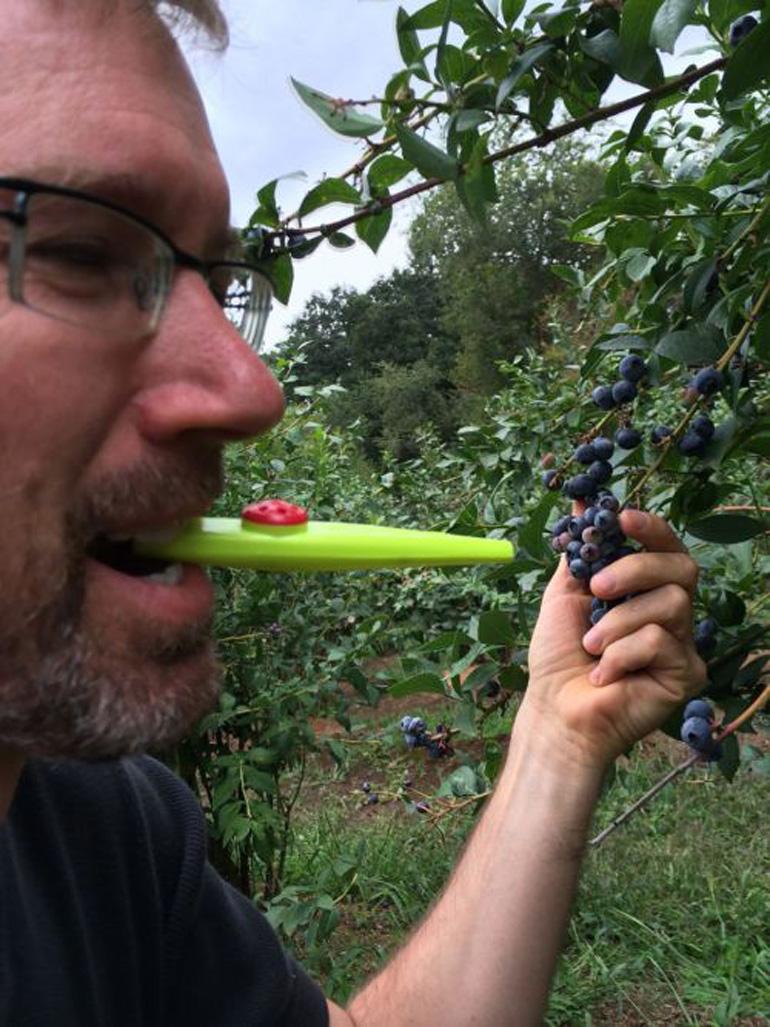


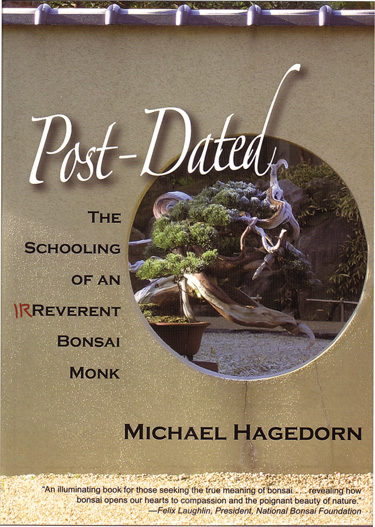
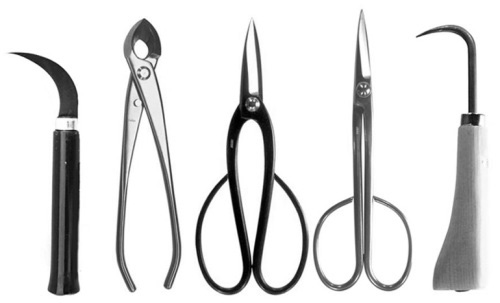
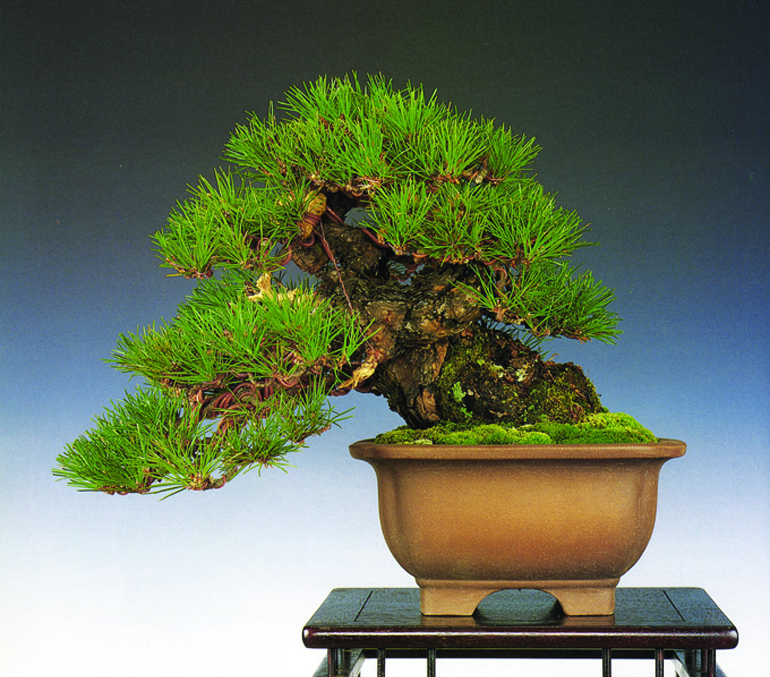 Japanese black pine (Pinus thunbergii) just after trimming and wiring (the before photo is below). From our
Japanese black pine (Pinus thunbergii) just after trimming and wiring (the before photo is below). From our  Well fed and at the peak of health. Now it's ready for trimming and wiring. Both photos of this tree are from our
Well fed and at the peak of health. Now it's ready for trimming and wiring. Both photos of this tree are from our 